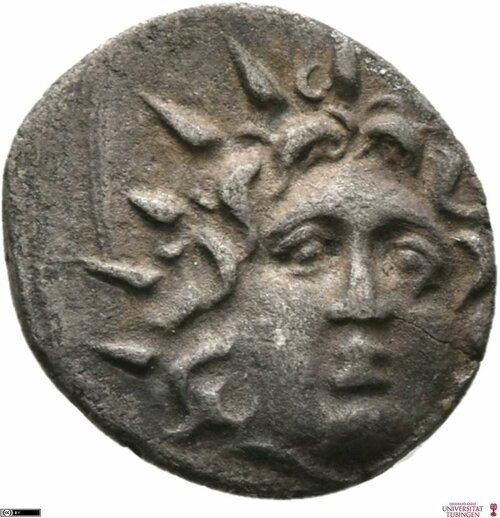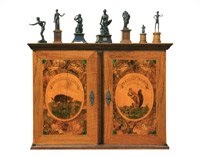Front: Kopf des Helios mit Strahlen im Haar in Dreiviertelansicht nach r.
Rear: Rose mit Knospentrieben beiderseits. Rechts achtstrahliger Stern als Beizeichen, oben Beamtenname MHNOΔΩPO. Das Ganze in flachem Quadratum incusum.
en

Front: Kopf des Helios mit Strahlen im Haar in Dreiviertelansicht nach r.
Rear: Rose mit Knospentrieben beiderseits. Rechts achtstrahliger Stern als Beizeichen, oben Beamtenname MHNOΔΩPO. Das Ganze in flachem Quadratum incusum.
Rückseite: P-O
Silver; struck
Die Münzsammlung des Instituts für Klassische Archäologie, dessen Kern auf eine Schenkung an die Universität im Jahre 1798 zurückgeht, zählt heute...
Contact the institution[Last update: ]
